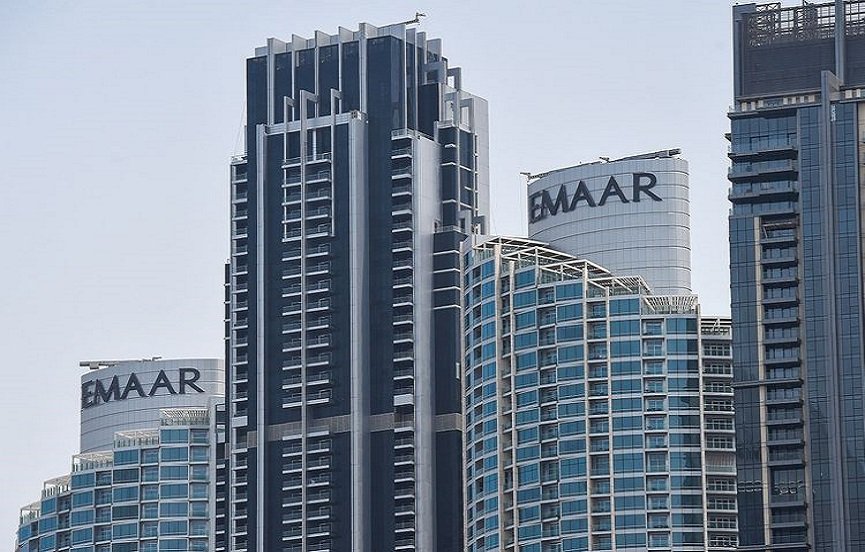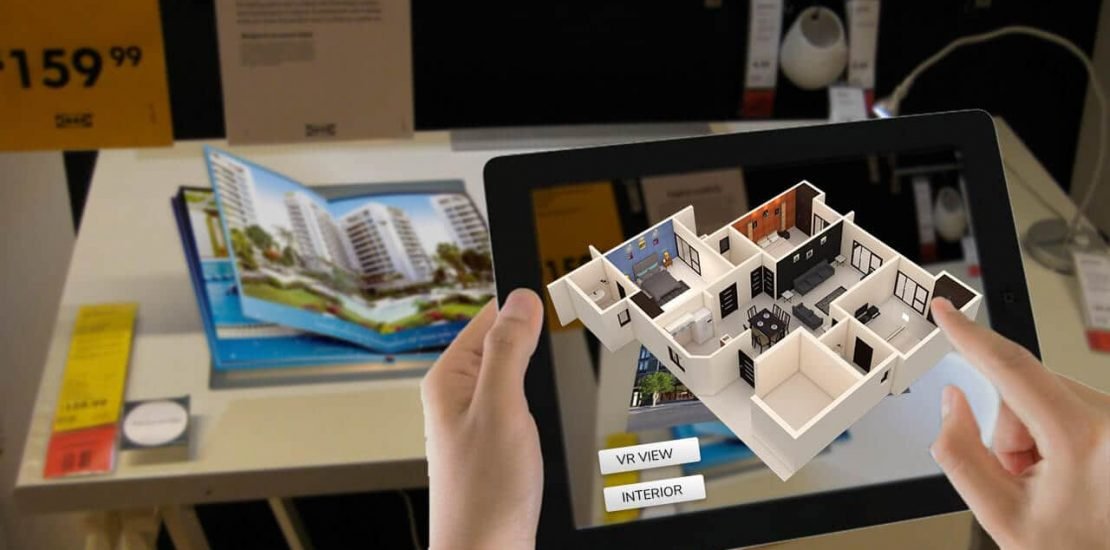The real estate industry in the Middle East is experiencing a technological revolution, with virtual reality (VR) and augmented reality (AR) becoming integral tools in the way properties are designed, marketed, and sold. As the region continues to invest in mega-projects and cutting-edge infrastructure, VR and AR are transforming the property market by offering innovative solutions that enhance the buyer experience, streamline construction processes, and improve decision-making for developers and investors.
This article explores how VR and AR technologies are reshaping the Middle Eastern real estate sector, highlighting key applications, benefits, and future trends.
1. Virtual Reality (VR): Transforming Property Viewing and Design
Virtual reality offers an immersive, 3D environment that enables potential buyers and investors to explore properties remotely, providing a lifelike experience without the need for physical presence. In the fast-paced and highly competitive Middle Eastern real estate market, VR is particularly useful for off-plan properties, where buyers can visualize developments before they are built.
a) Virtual Property Tours
One of the most popular applications of VR in real estate is virtual property tours, which allow prospective buyers to take immersive walkthroughs of homes, apartments, and commercial spaces. VR tours enable potential investors to explore properties in Dubai, Abu Dhabi, Riyadh, and other key markets from anywhere in the world, providing a high level of detail, including room layouts, finishes, and furnishings.
Dubai-based Emaar Properties, one of the largest real estate developers in the region, has implemented VR in its sales centers, allowing buyers to experience properties like the Dubai Creek Harbour and Emaar Beachfront before construction is complete. This not only enhances the customer experience but also speeds up decision-making, as clients can make informed choices without needing to visit the site.
b) 3D Architectural Visualization
For architects and developers, VR provides an invaluable tool for 3D architectural visualization. This technology allows designers and project managers to walk through a virtual model of a building and identify potential design flaws or improvements before construction begins. By offering a more accurate and realistic view of a project’s final outcome, VR minimizes costly changes during the construction phase.
VR also enables architects to collaborate with clients in real time, allowing them to make modifications to design elements such as room configurations, lighting, and materials, based on client preferences.
2. Augmented Reality (AR): Enhancing Real Estate Marketing and Sales
Augmented reality, which overlays digital content onto the real world, is playing a crucial role in real estate marketing and sales in the Middle East. AR applications enhance the customer experience by allowing potential buyers to visualize how a property or space will look once completed, and even personalize it according to their preferences.
a) AR-Enabled Property Visualization
AR apps provide buyers with the ability to project a virtual model of a property onto their physical environment, whether that’s a vacant plot of land or an unfinished building. Using a smartphone or tablet, clients can view the building’s external structure, interior design, and furnishings in real time. This is particularly beneficial for clients who are looking to purchase off-plan properties, as they can visualize the final look of the project with AR overlays.
Ellington Properties, a luxury real estate developer in Dubai, has embraced AR technology to give clients the opportunity to experience homes with personalized interiors and finishes. This customization process enables buyers to change flooring, wall colors, and furniture in real time, empowering them to create a vision of their dream home before making a purchase decision.
b) Interactive Sales Presentations and Showrooms
AR is also being used to create interactive sales presentations and showrooms, transforming the traditional real estate sales process. For example, in sales offices or showrooms, prospective buyers can use AR headsets or mobile devices to interact with 3D models of properties, zooming in on specific details or visualizing how different configurations would look. AR-based sales presentations are particularly effective in showcasing large-scale developments like Dubai’s District 2020 or Saudi Arabia’s NEOM.
By providing a more engaging and interactive experience, AR enhances customer satisfaction and boosts sales potential, as buyers are more likely to connect with properties they can experience in an augmented format.

3. Enhancing Construction and Project Management with AR and VR
Beyond marketing and sales, VR and AR are revolutionizing the construction and project management processes in the Middle East’s booming real estate sector. These technologies enable developers and contractors to enhance planning, reduce risks, and improve efficiency on large-scale projects.
a) Virtual Reality for Construction Planning and Collaboration
In the construction phase, VR can be used to create a virtual twin of a building, allowing project managers and construction teams to simulate the build process in a 3D environment. This helps identify potential challenges, such as structural issues, material requirements, or workflow bottlenecks, before construction begins. VR also facilitates collaboration between architects, engineers, and contractors by allowing them to virtually walk through a project, assess progress, and discuss design modifications.
For large-scale developments like The Red Sea Project in Saudi Arabia or the Dubai South district, where precision and coordination are critical, VR is playing a pivotal role in ensuring that construction projects stay on schedule and within budget.
b) Augmented Reality for On-Site Project Management
AR technology is being used to assist on-site construction teams by overlaying digital information onto real-world views. Through AR headsets or mobile apps, workers can view blueprints, structural plans, and safety information directly on the job site. This enhances accuracy and helps teams complete tasks more efficiently.
For example, by integrating AR into construction workflows, contractors can visualize where electrical wiring, plumbing, or HVAC systems need to be installed, reducing errors and minimizing delays. This is especially important for complex projects such as mixed-use developments or smart city initiatives, where precision is paramount.
4. Cost and Time Efficiency with VR and AR
One of the most significant benefits of VR and AR in real estate is the ability to reduce both costs and time in the property development process. Traditional real estate marketing involves the construction of physical showrooms, model units, and extensive travel for clients to visit properties. VR and AR eliminate many of these costs by allowing clients to explore properties digitally from anywhere in the world.
Additionally, by detecting design or construction issues early in the process, VR and AR help reduce the need for costly revisions or delays. For example, a developer in Riyadh can detect a potential design flaw in a commercial building before it is physically constructed, saving both time and money on adjustments.

5. Future Trends: The Integration of AI and Smart Technologies
The future of VR and AR in the Middle Eastern real estate market is likely to include deeper integration with artificial intelligence (AI) and smart city technologies. As smart cities like Masdar City and NEOM continue to develop, AR and VR will be essential in visualizing smart infrastructure and sustainable living environments. AI-powered virtual assistants could further enhance the experience by providing real-time information about properties, pricing, and investment opportunities.
Additionally, the growing use of 5G technology across the Middle East will accelerate the adoption of VR and AR by improving data transmission speeds and enabling more seamless, real-time interactions with digital environments.
Conclusion
The adoption of virtual reality and augmented reality in the Middle Eastern real estate sector is revolutionizing the way properties are designed, marketed, and sold. From immersive virtual property tours to AR-enabled customization options, these technologies are enhancing the customer experience and streamlining the construction process. With the region’s ambitious mega-projects and focus on becoming global hubs for technology and innovation, VR and AR will continue to play a pivotal role in the future of real estate.
Image Courtesy Notice
At The Storiez, we value the efforts of photographers, artists, and content creators. The images featured in our articles are sourced from various news portals and online websites. We strive to ensure proper credit is given wherever possible. If you are the rightful owner of any image used here and would like to request its removal or correct attribution, please feel free to contact us. We respect intellectual property rights and aim to address concerns promptly.

